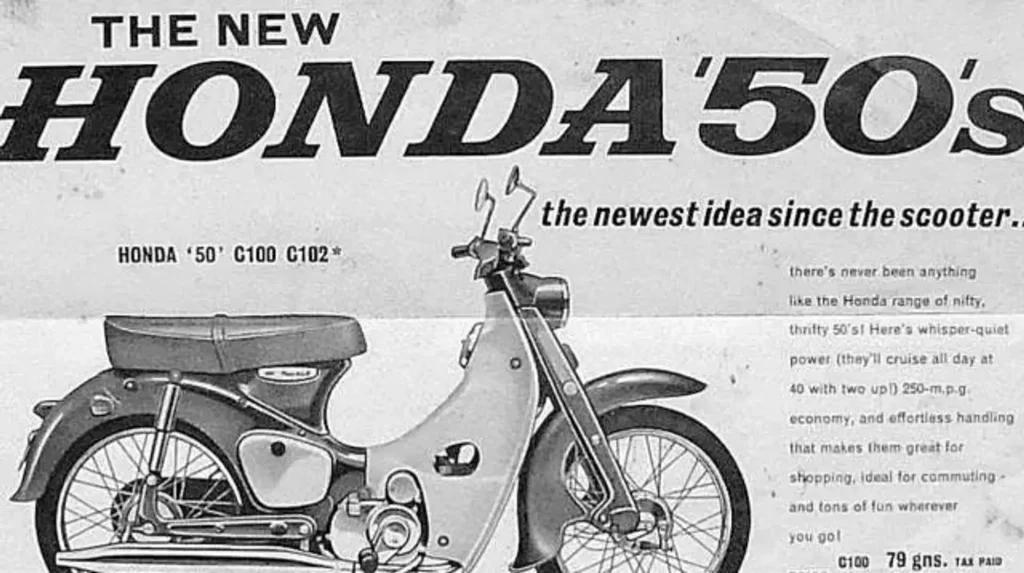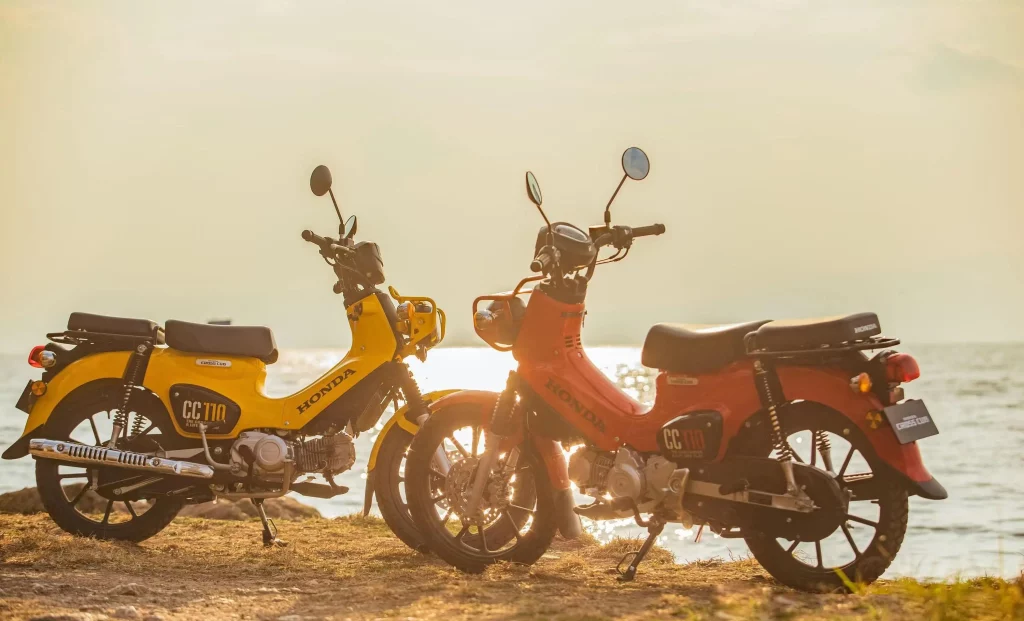The history of the Cub motorcycle, specifically the Honda Super Cub, is a tale of innovation and global impact that started in the post-World War II era. Soichiro Honda, the company’s founder, and Takeo Fujisawa, his partner, envisioned a motorcycle that would cater to the needs of the Japanese market and beyond. Their insights from a European trip in 1956 led to the creation of a vehicle that wasn’t quite a moped or a scooter but something in between. They aimed to design something that fit in the hand and was easy to operate, targeting an engine that delivered at least 4 horsepower from a 50cc four-stroke design, a significant leap from the 1 horsepower engines of that time.

The Super Cub’s engine, which was notably annoying to Mr. Honda in its two-stroke incarnation heard in Europe’s streets, was developed into a quieter four-stroke version. This engine eventually achieved 4.5 horsepower at 9,500 rpm, which was groundbreaking for its time. The design also featured a semi-automatic centrifugal clutch, which allowed for ease of use, especially for delivery services, since it could be ridden with one hand.
In terms of its structure, the Cub motorcycle had a steel frame with a continuous metal spar from the front forks to the rear mudguard, simplifying construction and maintenance. The plastic fairings, a first in motorcycle design, protected riders from the elements and hid the engine, contributing to a cleaner and sleeker look. The Super Cub was introduced to the world in 1957, and despite a tepid start due to Japan’s postwar recession, it went on sale in 1958 and gradually began to gain popularity.
A significant boost to the Super Cub’s reputation came from an outstanding customer service move by Honda. After receiving complaints about clutch issues, Honda staff, from executives to factory workers, used a holiday period to visit customers and repair their motorcycles for free. This act of dedication significantly raised consumer satisfaction and bolstered Honda’s reputation for standing behind its products.
The Super Cub’s popularity soared in Asia, particularly in countries emerging from colonial rule or those developing economically, where cars were often too expensive. The bike’s affordability, efficiency, and ease of maintenance made it an accessible mode of transport, drastically changing the mobility landscape across the region. It facilitated not just intercity travel but also created a revolution in the delivery services sector.
The Super Cub’s impact was such that Honda had to build a dedicated factory for its production in Suzuka, Mie Prefecture, modeled after the Volkswagen Beetle production line. The demand for the Super Cub was so high that once export and distribution issues were resolved, they sold as soon as they left the production line.
The Super Cub is likened to the Ford Model T and Volkswagen Beetle as an icon of 20th-century industry and transport. It featured a pressed steel monocoque chassis and was classified between a scooter and a motorcycle, sometimes referred to as a moped or scooter. The design was such that the 17-inch wheels gave it stability and an approachable appearance, while the semi-automatic transmission made it less intimidating for new riders.

In its marketing strategy, the Super Cub was also promoted in women’s magazines, reflecting an era of active, independent lifestyles and breaking away from the male-dominated perception of motorcycling. The original color scheme of the Super Cub, the sea, and sky hues, along with a red seat, reflected a blend of softness and brightness, appealing to a broad audience.
Ultimately, the Super Cub went on to become the most produced motor vehicle in history, with its simple, efficient, and reliable design, making it a staple on roads worldwide. It wasn’t just a product; it became a phenomenon that significantly contributed to Honda’s success and remains a critical chapter in the history of motorcycling
The Super Cub is Honda’s first pot of gold. The motorcycle was designed and manufactured in 1958 and has undergone many revisions over its nearly 70-year history. More than 100 million units have been produced and sold in the global market, making it Honda’s best-selling motorcycle. Today, The Super Cub has developed into a type of motorcycle that is loved by users and is produced by other motorcycle manufacturers. Chinese KAMAX has a line of motorcycles based on the Super Cub Design, licensed from Honda, the Cub Pro 125 series, once it was launched, it was deeply favored by users.
